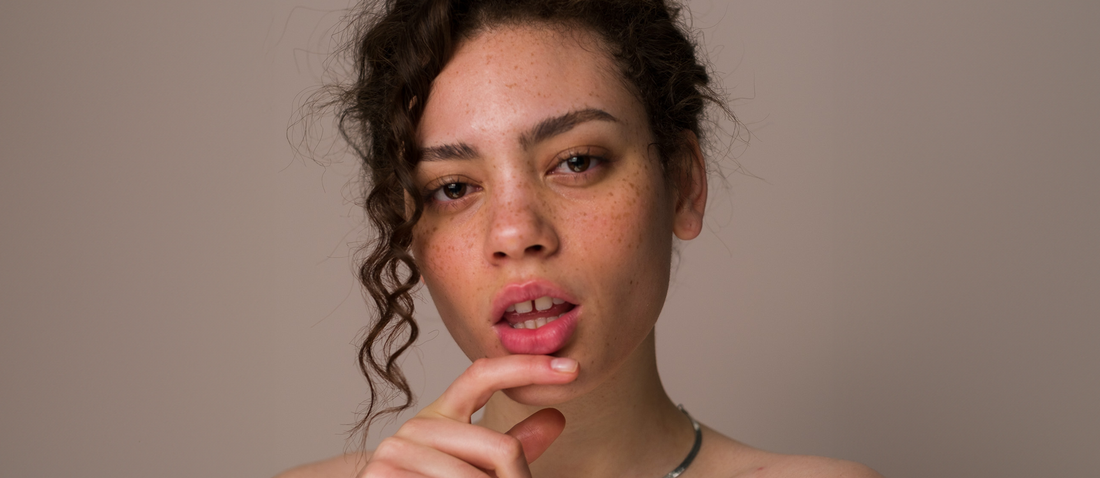When we’re dealing with an achy breakout, we’ll try just about anything to make the pain, irritation, and redness subside. If ice therapy soothes bruises and bumps after a fall or injury, can an ice cube work the same way for acne?
The simple answer to “does ice help acne” is yes, an ice facial can temporarily relieve some of the pain, redness, and even swelling of a particularly bad breakout.
Today, we’ll dive into the science behind why—and the best methods for using ice and other skin care tools to treat acne and help your skin feel better over the long term.
WHAT DOES THE EVIDENCE SAY ABOUT ICE AND ACNE?
Ice is recommended for its anti-inflammatory benefits in countless fields outside of dermatology. You’ve almost certainly iced a sprained ankle or a bump on your head before. Similarly, ice is recommended for reducing the swelling associated with more inflammatory forms of acne (more on that later).
Application of ice is also used to enhance lymphatic drainage, which can help with facial puffiness. Cold compresses also constrict blood vessels, helping to alleviate the redness associated with acne breakouts.
HOW TO USE ICE ON ACNE
There are a few important things to remember when using ice to soothe or treat acne. Incorrectly applying this treatment can result in frostbite and further irritation to the skin, so proceed carefully:
Avoid direct contact
When applying ice, especially to the delicate skin of your face, make sure to avoid letting the ice touch your skin directly, as this can cause an ice burn. Instead, wrap your ice cube or ice pack in a clean washcloth or paper towel.
Keep it short
Recommendations for how long you should ice your pimples vary, but a good rule of thumb is to only keep ice applied for a minute or two at a time. You can repeat these short bursts of icing until you see the inflammation go down, but leave some time between each application to let your skin come back up to temperature so you aren’t dealing with ice burns or irritation.
Try an ice roller
While standard ice cubes or cold packs work just fine, some people swear by an ice roller tool. This type of device, chilled in the freezer, glides along the contours of the face, allowing for optimal application of ice. It’s by no means necessary, but could be a nice self-care addition to your skincare routine.
DOES ICE HELP WITH ALL TYPES OF ACNE?
Ice may be one of humanity’s most ubiquitous solutions for reducing swelling, pain, and general inflammation, but that doesn’t mean that every single type of acne breakout, pimple, pustule, or cyst will respond to it the same way.
Generally, the rule of thumb when asking “does ice help acne” is to remember ice’s main mechanism of action: fighting inflammation. It then logically follows that ice will be most useful for inflammatory forms of acne, which include:
- Nodulocystic acne
- Cystic acne
- Papules and pustules
- Hormonal acne
If you’ve struggled with any of the above acne concerns, you’ll understand that they come with varying degrees of pain, swelling, and redness––all things icing can help with. Comedonal acne, more commonly known as blackheads and whiteheads, are less likely to see any benefit from ice.
So, does ice help pimples? It depends on the kind of pimples. Nodules, cysts, and pustules? Yes. Whiteheads and blackheads? Try exfoliants instead, or even a gentle retinoid.
HOW TO TREAT MORE STUBBORN ACNE
For most inflammatory acne breakouts, ice alone won’t be enough to rid your skin completely of acne and pimples. Ice is a good starting point, as it tackles the inflammation, allowing active ingredients like antibacterials or retinoids to penetrate deeper into the skin and start working more quickly. Understanding the difference between retinoid vs retinol is key in selecting the right product for your acne treatment regimen.
To help get the most benefit out of your icing, pair it with the Seven:Thirty skincare kit. For example, you should only ever apply ice to already cleansed skin. For a cleanser that doesn’t strip or dehydrate, try our GENTLE GENTLE gel cleanser.
To bolster ice’s inflammation-fighting potential, add a corrective serum. For more anti-acne power, try out 5% Benzoyl Peroxide gel, an acne treatment gel featuring benzoyl peroxide, an ingredient that will be even more effective on your skin after a cold compress.
FREEZE ACNE IN ITS TRACKS WITH SEVEN:THIRTY
The good news is in: If you feel the dreaded pulsing, stinging, or pressure of a patch of pimples coming on, relief can come right from your freezer. But remember that the relief ice brings to pimples can only be temporary, and you’ll want to feed your skin with healing ingredients alongside icing to reach long-term results.
At Seven:Thirty, we’re focused on clean, caring, and clinically proven skincare. We prioritize quality, science-backed ingredients to ensure that your treatments are doing just that: treating your skin—rather than making matters worse.
We also take a holistic approach to skincare, considering lifestyle, diet, and genetics when recommending a treatment plan. Shop our wide selection of acne, hyperpigmentation, and age management solutions, or consult our professionals directly for a more personalized roadmap to healthy skin.
Sources:
Healthline. Can Ice Treat Pimples? https://www.healthline.com/health/ice-on-pimple#How-to-use-it
Clinical Journal of Sport Medicine. The Influence of Cold and Compression on Lymph Flow at the Ankle. https://journals.lww.com/cjsportsmed/abstract/1998/10000/the_influence_of_cold_and_compression_on_lymph.3.aspx

